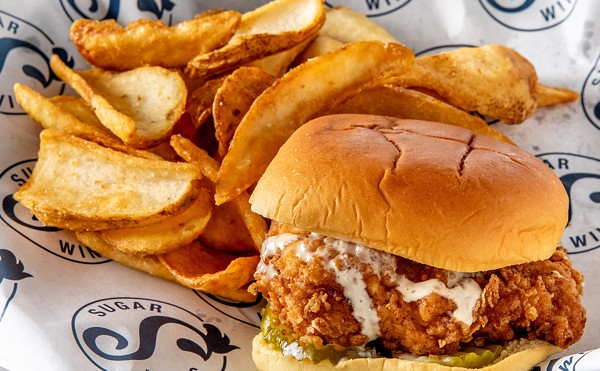Omnivore also paved the way for an explosion of books and movies covering our woeful food system over the past four years: King Corn; Food, Inc.; Animal, Vegetable, Miracle; and a slew of others. Pollan himself also became an icon of the progressive food movement, moving from chronicler of woe to problem-solving activist in a few short years,
[image-1]2. Atkins Goes Bankrupt
When an updated version of Dr. Robert Atkins 1972 diet book hit the bestseller lists in 1972, it changed the way the United States ate. But not forever.
By now, we all know how it works: Eat few (or no) carbohydrates and your body will re-configure its chemistry to gnaw away at your stored fat deposits. For some, it was an excuse to nosh on bacon and cheese every meal, every day. For chefs, it was as annoying a culinary fetish as veganism. Bread baskets were shunned on restaurant tables. Supermarkets decreased the space allotted to the loaves that had sustained society through 4,000 years of civilization. Pasta sales dropped precipitously.
Although many people reported short-term weight loss on the Atkins diet (and the innumerable offshoots that took advantage of the craze), numerous studies showed that the long-term health effects were rarely positive. Dr Atkins himself -- who died in 2005 -- suffered from ongoing heart and high-blood pressure issues.
Undoubtedly, that's a big reason why Atkins Nutritionals was forced to file for bankruptcy protection in 2005, signalling the slow demise of the nationwide fad. Another likely cause, however, was the reality of living on the diet. "It just got kind of tiresome, eating the same thing over and over," one ex-Atkins dieter told the Associated Press. "It was monotonous."
[image-2]3. Wal-Mart Becomes An Organic Giant
In 2000, the USDA estimated organic food sales at $7.8 billion. By 2008 that had more than tripled, with an astounding $24.6 billion dollars spent by consumers on food that's perceived as healthier, more nutritious, and better for the environment than conventional produce.
Sounds impressive, doesn't it? Maybe. Those 2008 numbers show that organic foods accounted for only 3.5 percent of total food sales in the United States. The more impressive stats have to do with market penetration.
In 2000, about half of organic food sales happened in mainstream grocery stores (as opposed to specialty "natural" foods retailers). Now, that number is much, much higher. Just look at Walmart.
In 2006, the mega-retailer announced a new focus on organic foods in its stores. At a shareholder's meeting that year, Walmart CEO Lee Scott said: "We know that customers at all ends of the income spectrum want organic and natural foods. But, frankly, most of them just can't afford the high prices the specialty stores charge.Well, we don't think you should have to have a lot of money to feed your family organic foods" That might seem like a savvy retailer taking advantage of a trend, but most of the people at the forefront of that trend were not Walmart shoppers. By injecting a mass of organic food into their stores, Walmart was hoping to create a market, to get in front of the trend and push it along. It worked.
Just look at Food, Inc., a 2009 movie that vacillates between shocking slaughterhouse images and sanitized interviews with corporate America. The movie almost lionized Wal-Mart execs, following along while they visit organic farms, with little concern for the myriad of problems that arise when the world's largest retailer becomes one of the world's largest purchasers of organic foods.
By 2008, the USDA estimated that more than 82 percent of organic food sales were made at mainstream food retailers. Like Wal-Mart.
[image-3]4. World Teeters on the Edge of Widespread Hunger
2008 saw food prices increase by over 57 percent worldwide, with much of the increase coming in the most fundamental staples, like rice, beans and wheat. In Haiti, food riots were virulent enough to overthrow the government. Egyptian President Hosni Mubarak ordered the military to start baking bread to forestall similar unrest in his country. The Philippines made rice-hoarding punishable by life imprisonment. Similar scenes played out in dozens of other countries, even here in the United States.
In 2007, dairy prices reached an all-time high in the U.S. Higher rice and flour prices encouraged some consumers and restaurateurs to start stockpiling against future increases. For a brief time, big retailers like Costco limited purchases of their large bags of rice, and cut back on the varieties they had for sale.
Still, many in the U.S. ignored the difficulties experienced in less affluent nations. When all you have is a dollar a day to fill the rice bowl, a jump in prices is devastating. "In other parts of the world, they don't have much else besides the basic grains," explained University of Florida professor of food and resource development Dr. Richard Kilmer. "Here in the U.S., there's a lot more else."
The causes of this World Food Crisis were myriad and complicated, but there were two big culprits:
- Increased demand for biofuels caused higher prices for commodities, as well as a host of other problems. Turns out that filling your SUV with ethanol is akin to taking food from hungry people, and you're probably not helping the environment in the process.
- Forty percent of the world's grain goes to meat production. It's not all our fault -- giant developing countries like India, China and Indonesia are consuming more meat than ever before, twice as much as 20 years ago. They're us, circa 1970. And like us, it's going to take them time to figure out the problems with their new-found prosperity.
Things have gotten better in the past year or so, but only a bit. And the entire world's flirtation with starvation showed that even well-intentioned food policy often has unintended and devastating consequences.
[image-4]5. "Emeril Live" Cancelled by the Food Network
The Food Network saw its highest prime-time ratings ever in 2007: over 778,000 people viewers tuning in for a dose of "Bam!" and "EVOO!" But, during the same period, cable's dedicated cooking channel also saw its overall ratings drop. Enter a new era in television food.
When the network began in 1993, it had a roster of up-and-coming chefs to host its shows, including Mario Batali, Bobby Flay and the inimitable Emeril Lagasse. Back then, chefs were hired because they had a focus that fit a new show idea, or a show was created around them. Right around 2005, that started to change.
We can blame it on Rachael Ray or Paula Deen, maybe, but the real culprits are the programming execs behind the Food Network. Suddenly, people like Bob Tuschman, then Food Network’s senior vice president for programming and production, started bandying about words like "branding" and "product" in reference to the actual people hosting the shows. New shows became sanitized, lowest-common denominator versions of the chef-based programming that used to prevail on the network.
“They don’t need me. They have decided they are mass market and they are going after the Walmart crowd,” Mario Batali told the New York Times. “A smart business decision. So they don’t need someone who uses polysyllabic words from other languages.” Out were people like Batali and Bourdain, in comes Sandra Lee.
In 2007, the network cancelled "Emeril Live", ending 11 years of nightly shows in one fell swoop. Food Network was severing its ties to the past, and announcing a new era of bland TV.
















